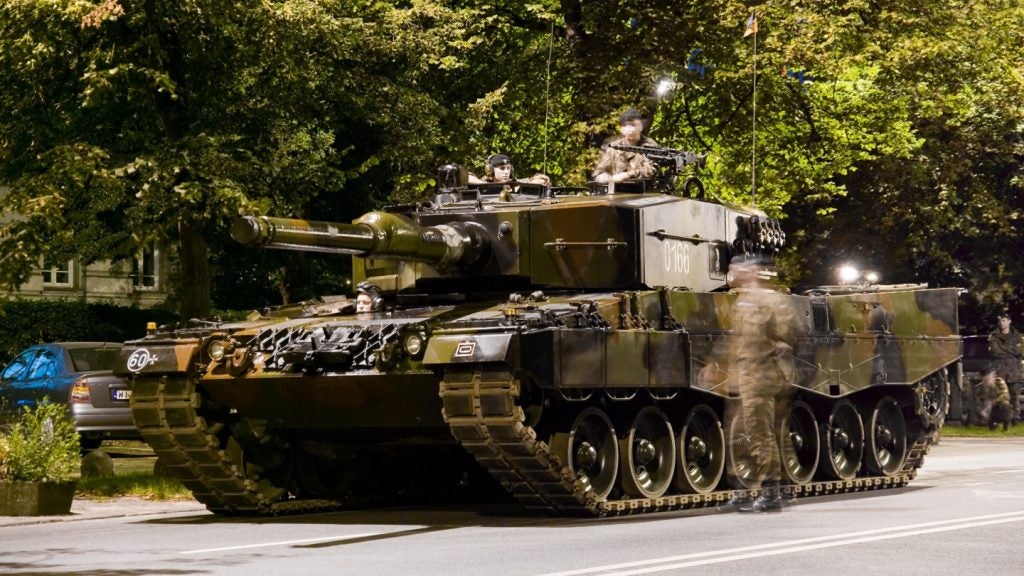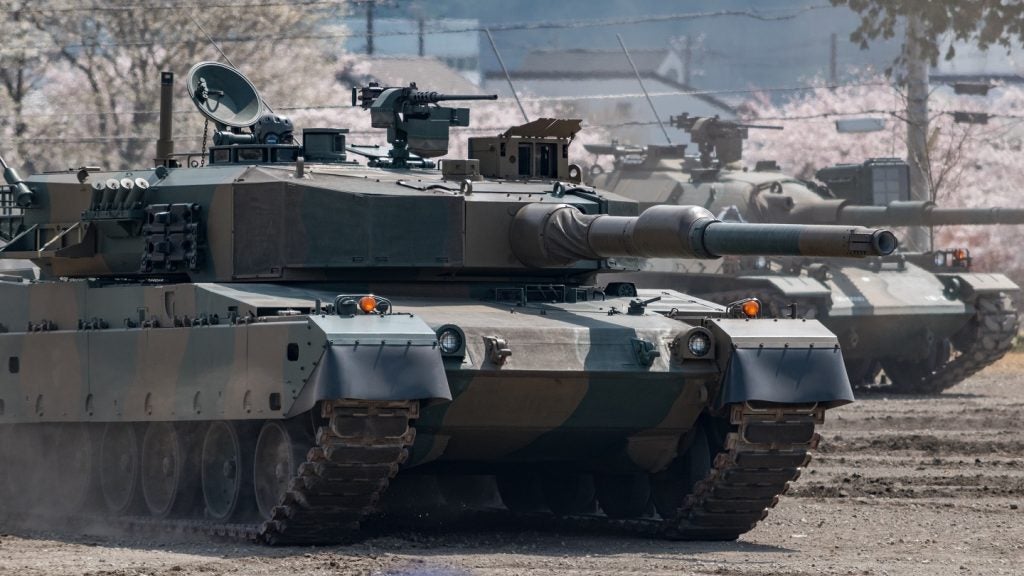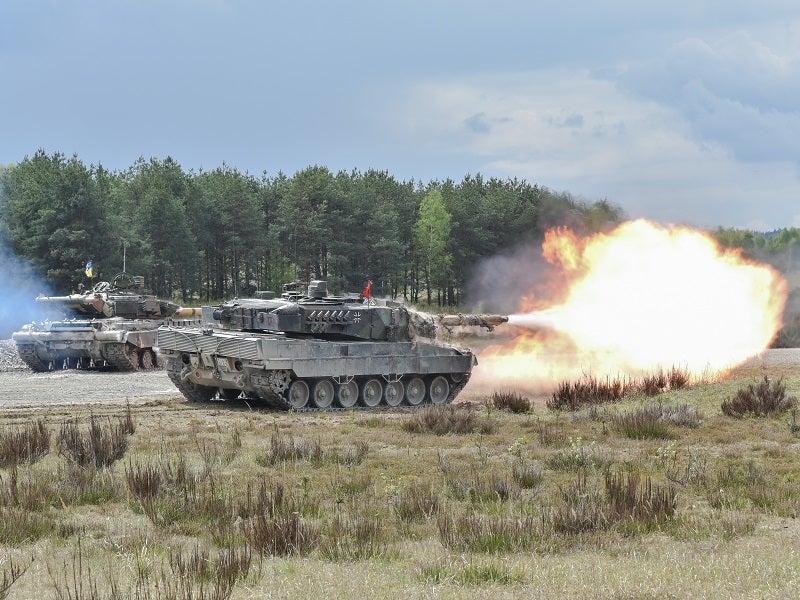
As NATO prepares a comprehensive heavy armour package for Ukraine following Germany’s decision to provide its Leopard 2A6 main battle tanks (MBTs), questions remain as to what such an escalation means for the combatants in the Ukraine-Russia war and the remaining options open to the Alliance should the tanks not tip the strategic balance on the battlefield.
Berlin appears to have caved into pressure from NATO after it had stopped short of promising Leopard 2 tank to Ukraine at the recent Ukraine Contact Group meeting at Ramstein air base in Germany on 20 January, a move that was met with widespread disappointment from Ukraine and some NATO members.
How well do you really know your competitors?
Access the most comprehensive Company Profiles on the market, powered by GlobalData. Save hours of research. Gain competitive edge.

Thank you!
Your download email will arrive shortly
Not ready to buy yet? Download a free sample
We are confident about the unique quality of our Company Profiles. However, we want you to make the most beneficial decision for your business, so we offer a free sample that you can download by submitting the below form
By GlobalDataHowever, in a U-turn on 24 January, Berlin confirmed that it would be sending 14 Leopard 2A6 tanks to Ukraine, a move that also enables other European operators to provide their own packages with potentially up to half a dozen countries thought likely to do so. This could see anywhere from 50-100 Leopard 2 tanks, comprised of the latest A6 model as well as older variants, sent to Ukraine.
“The pressure on Germany to step up lethal aid or at least streamline allied exports has undoubtedly risen due to the mounting urgency of providing critical support before the spring offensives. It was imperative that the Ukrainians could be supplied and trained before the outbreak of fighting, which would complicate planning and logistics,” said Tristan Sauer, land domain analyst at GlobalData.
The beginning of the armoured build up
On 16 January the UK was the first western NATO member to commit to sending tanks to Ukraine, although Slovakia had earlier sent 28 M55S tanks over to Kyiv. The move to provide modern MBTs to Ukraine is possibly the final major land platform that could be provided to Kyiv, following NATO members earlier commitments of hundreds of artillery pieces, infantry fighting vehicles, armoured personnel carriers, logistical capabilities, along with hundreds of thousands of rounds of ammunition and advanced munitions, among other military assistance.
With both Ukraine and Russia expected to embark on their own offensives in the spring or early summer this year in a bid to break the entrenched front lines in the east of Ukraine, NATO is hoping for a decisive Ukrainian victory that would bring Moscow to the negotiating table. However, a Ukrainian failure could result in consequences for the Alliance and run the risk that the next escalation may result in a general European conflict against Russia.
The prospect of a general conflict between NATO and Russia is still some way off, said Sauer, who considers western caution in overt support of high-level hardware to be dissipating.
“With MBTs, IFVs, missile defence [via the Patriot system] and SAMs being greenlit in recent weeks, two things are becoming clear: Putin’s assertion of ‘full scale war with the West’ is becoming more accurate, and his threats of retaliation now carry much less weight,” stated Sauer.
“The only other major capabilities Ukraine has been asking for have been air assets such as fighter jets and close-air support platforms. The lack of air supremacy by both sides provides a prime opportunity for any force with good air dominance capabilities, however due to the cost and complexity of integrating western air assets into the Ukrainian air force mid-conflict it’s unlikely we will see this happen.”
While some eastern European nations could look to provide Ukraine with Soviet-era air assets, they would not have “transformative” capabilities, according to Sauer, adding that NATO could be required to take further steps if the tanks supplied to Ukraine did not have the desired impact.
“If a non-tokenistic supply of MBTs is not enough to guarantee a Russian military defeat – or force them to the negotiating table in the next year) – the West may eventually concede that Russian belligerence requires more ‘direct intervention’, otherwise western leaders will have to justify huge military expenditures and the donations of materiel for no tangible benefits,” Sauer said.
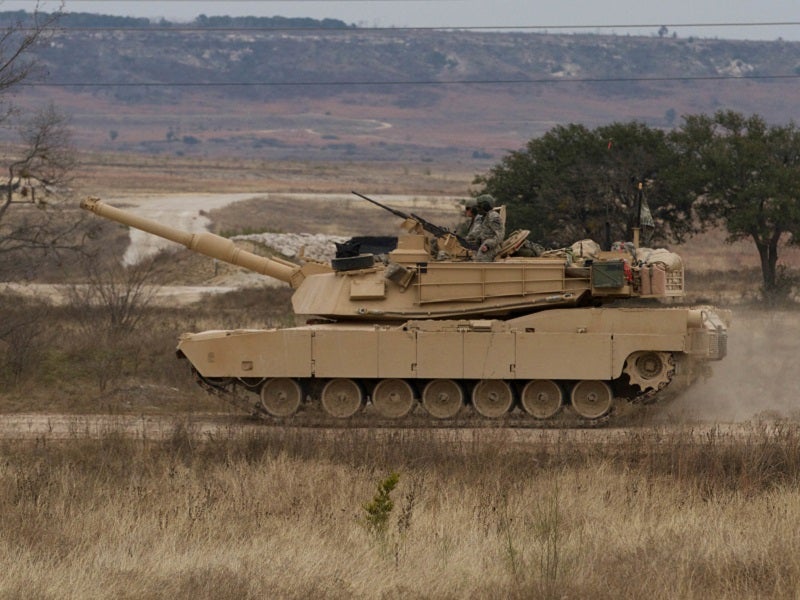
For its part, the US has declined to confirm that it would be sending the Abrams tank, instead talking of wider assurances that it remained committed to supporting Ukraine. Speaking during a press conference on 24 January, a Pentagon spokesperson declined to comment on media reports that the US would be willing to provide M1 Abrams MBTs to Ukraine.
“As we have said all along, we continue to have robust dialogue with our international allies and partners to focus on what Ukraine’s immediate battlefield needs are in the near term, but we also have discussions about what they may need in the medium to long term. When and if we have something to announce [on Abrams provision to Ukraine], we will,” said US Air Force Brigadier General Pat Ryder.
“The M1 [Abrams] is a challenging weapon system that is complex to maintain. That was true yesterday, it’s true today, [and] it’ll be true in the future. Without getting into hypotheticals, anytime we have provided Ukraine with any type of system, we have provided training and sustainment capabilities with that,” Ryder added.
How does the Leopard compare against Russian tanks?
According to Sauer, the capabilities of the Leopard 2 could be “broadly compared” to Russia’s T-90 series MBTs, both featuring 120/125mm smoothbore main guns, complex armour, and the ability to integrated modern active protection systems. However, Sauer said that all tanks remained vulnerable to conventional anti-tank guided munitions, as seen in battlefields in Syria and Ukraine.
“The critical difference is mobility, as the Leopard 2 has a larger 1,500HP engine and upgraded transmission, making it far more effective at manoeuvre warfare than the Russian T-90s [950HP] which we’ve seen struggling in the Ukrainian terrain. Spring rains will make the terrain relatively challenging, and fast manoeuvre will be critical to breakout from the currently stagnating frontlines,” Sauer explained.
“The pressure on Germany to step up lethal aid or at least streamline allied exports has undoubtedly risen due to the mounting urgency of providing critical support before the spring offensives. It was imperative that the Ukrainians could be supplied and trained before the outbreak of fighting, which would complicate planning and logistics.”
However, the integration of such advanced vehicles into Ukraine’s force structure and coping with the requisite maintenance, repair, and operations (MRO) demands will be a significant challenge.
“Integrating the Leopard 2 is a serious challenge, as being ‘modern/advanced’ they are complex systems with unique features Ukrainian tank crews are unfamiliar with. Ukrainians are far more familiar with Soviet-era platforms and would require additional familiarisation on the Leopards, otherwise their reflexes in combat will result in fatal mistakes,” Sauer said.
“The other issue is MRO of western platforms, as Ukrainian military engineers and industry are also less familiar with these platforms and will take longer to conduct repairs or ‘jury-rig’ solutions when necessary.”
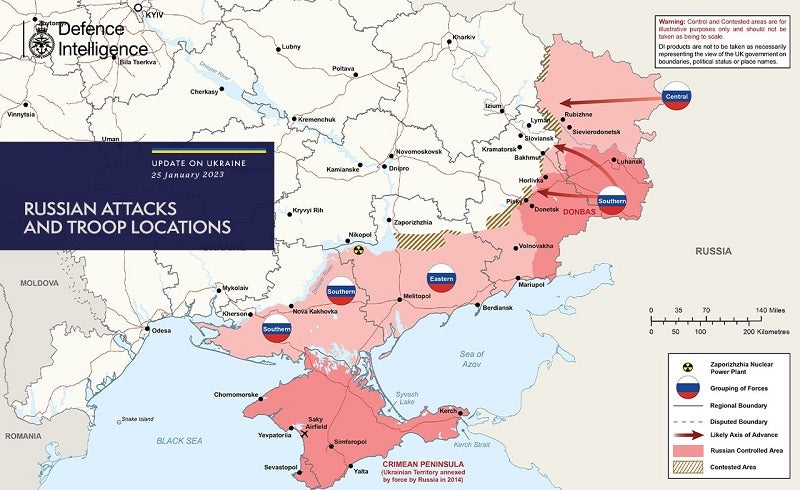
Despite these challenges, the ubiquitous nature of the Leopard in Europe’s militaries has created a continental MRO support capability, that could be utilised to ensure that Ukrainian platforms are able to be maintained and made ready for frontline operations.
“The problems with MRO integration could be offset if Ukraine and its allies create an MRO network where Leopards are cycled between Ukrainian front and allied EU/NATO nation facilities for repairs outside the warzone,” said Sauer, adding that such a move could lead to a new “escalation” argument.
“So, how many Leopards can Ukraine handle depends on the extent of cross-border support once they’re delivered, as if there’s no MRO they become tokenistic at best and a PR liability at worst; if there is support, Ukraine could gradually learn to operate 50-100 [western MBTs].”
Can Leopard, Challenger and Abrams make the difference?
As the saying goes, quantity has a quality all of its own, and, despite the sophistication of the Leopard and Challenger 2 tanks, sheer mass and numbers will matter on the expansive battlefields of eastern Ukraine. According to Sauer, if provided in sufficient numbers, a scale measured in the hundreds, then western MBTs could have a “huge impact” on Ukraine’s offensive operations.
“Fighting has stagnated now because of winter conditions, [with] frontline consolidation and heavy losses of equipment on both sides. Both Russia and Ukraine are having to economise on critical equipment, such as advanced MBTs, jets, helicopters, as they cannot replace them at pace during the war,” Sauer detailed.
“Should Ukraine suddenly have a large supply of armoured vehicles, it could conduct new offensives to assault and hold territory – which MBTs are well suited for – while the Russians still struggle to replace their equipment at pace. There is no question that the force which can field the largest number of combat-capable armoured platforms and replace them reliably will succeed in the coming spring/summer operations.”





